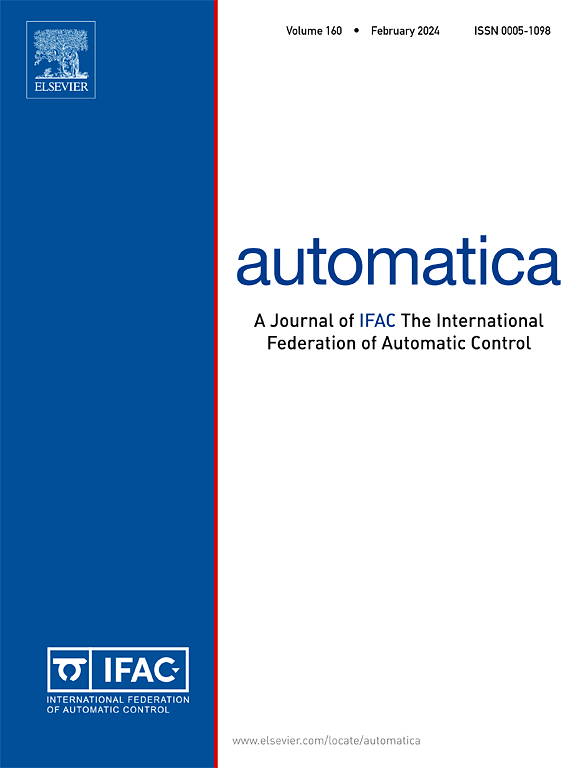Collision/obstacle avoidance distributed cooperative output regulation of multi-robot systems
IF 4.8
2区 计算机科学
Q1 AUTOMATION & CONTROL SYSTEMS
引用次数: 0
Abstract
This paper investigates the collision/obstacle avoidance problem in the distributed cooperative output regulation of multi-robot systems (MRSs). Due to the existence of obstacles, the original reference signals may conflict with the obstacle regions. The simultaneous consideration of obstacle avoidance and collision avoidance seriously increases the risk of deadlocks. To address these issues, a distributed command governor equipped with a distributed adaptive observer and an online projection planner is designed. When the reference signal does not conflict with obstacle regions, a safe command signal is generated by the distributed adaptive observer. When the reference signal conflicts with obstacle regions, the planner projects the reference signal onto the boundary of the obstacle region and adaptively adjusts the projected signal via multiple barrier functions and decision variables to generate a safe command signal. It is shown that the deadlocks are excluded and the asymptotic convergence of the tracking error is guaranteed. Finally, the proposed scheme is applied to the nonholonomic mobile robots to demonstrate its effectiveness.
多机器人系统的碰撞/避障分布式协同输出调节
研究了多机器人系统分布式协同输出调节中的避碰/避障问题。由于障碍物的存在,原始参考信号可能与障碍物区域发生冲突。同时考虑避障和避碰,严重增加了车辆发生死锁的风险。为了解决这些问题,设计了一个配备分布式自适应观测器和在线投影规划器的分布式命令调控器。当参考信号与障碍物区域不冲突时,由分布式自适应观测器生成安全指令信号。当参考信号与障碍区域冲突时,规划器将参考信号投影到障碍区域边界上,并通过多个障碍函数和决策变量对投影信号进行自适应调整,生成安全的命令信号。结果表明,该方法排除了死锁,保证了跟踪误差的渐近收敛性。最后,将该方法应用于非完整移动机器人,验证了其有效性。
本文章由计算机程序翻译,如有差异,请以英文原文为准。
求助全文
约1分钟内获得全文
求助全文
来源期刊

Automatica
工程技术-工程:电子与电气
CiteScore
10.70
自引率
7.80%
发文量
617
审稿时长
5 months
期刊介绍:
Automatica is a leading archival publication in the field of systems and control. The field encompasses today a broad set of areas and topics, and is thriving not only within itself but also in terms of its impact on other fields, such as communications, computers, biology, energy and economics. Since its inception in 1963, Automatica has kept abreast with the evolution of the field over the years, and has emerged as a leading publication driving the trends in the field.
After being founded in 1963, Automatica became a journal of the International Federation of Automatic Control (IFAC) in 1969. It features a characteristic blend of theoretical and applied papers of archival, lasting value, reporting cutting edge research results by authors across the globe. It features articles in distinct categories, including regular, brief and survey papers, technical communiqués, correspondence items, as well as reviews on published books of interest to the readership. It occasionally publishes special issues on emerging new topics or established mature topics of interest to a broad audience.
Automatica solicits original high-quality contributions in all the categories listed above, and in all areas of systems and control interpreted in a broad sense and evolving constantly. They may be submitted directly to a subject editor or to the Editor-in-Chief if not sure about the subject area. Editorial procedures in place assure careful, fair, and prompt handling of all submitted articles. Accepted papers appear in the journal in the shortest time feasible given production time constraints.
 求助内容:
求助内容: 应助结果提醒方式:
应助结果提醒方式:


